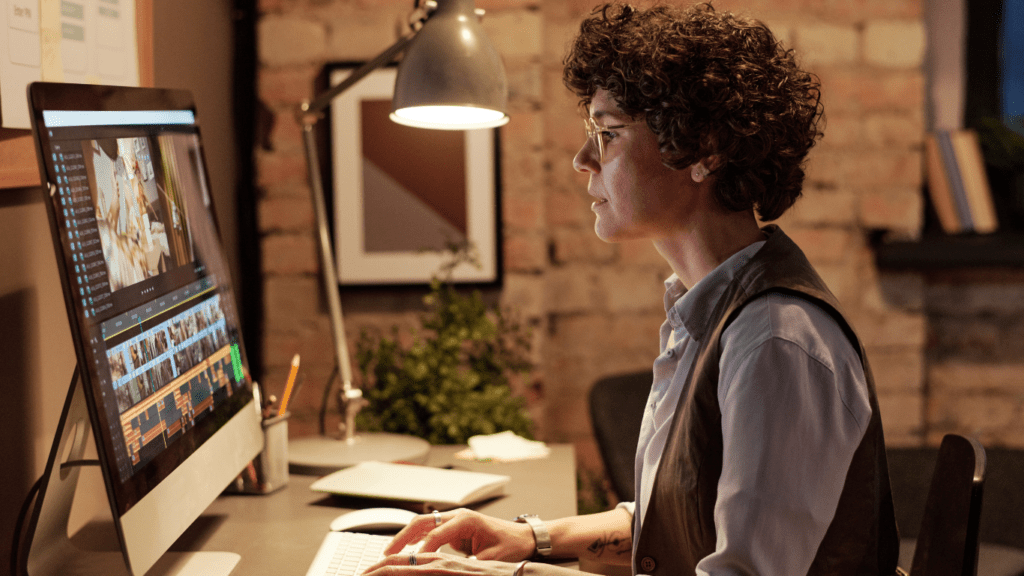A photography portfolio isn’t just a collection of images—it’s your chance to tell a story, showcase your style, and leave a lasting impression. Whether you’re an aspiring photographer or a seasoned pro, creating a portfolio that truly stands out can open doors to exciting opportunities and help you connect with your dream clients.
Why A Great Photography Portfolio Matters
- A photography portfolio represents more than just your work; it establishes your credibility and professionalism. Clients and collaborators often use portfolios to determine if a photographer’s style aligns with their needs or vision.
- A strong portfolio increases opportunities. Art directors, clients, and agencies frequently browse portfolios to decide who to hire. A well-constructed portfolio sets you apart from competition by highlighting your technical skills and creative capabilities. To support this, you can create a useful print business cards online, making it easier to share your details during client meetings, portfolio reviews, or networking events.
- It communicates your unique style and vision. A great portfolio conveys consistency and focus while showcasing your expertise across different themes or categories. For example, a wedding photographer’s portfolio might emphasize emotional captures, while a commercial photographer’s portfolio might highlight sharp, polished imagery.
- It saves time in communication. An effective portfolio, especially one organized clearly, answers common questions about your skills, experience, and versatility without lengthy explanations. This efficiency benefits both you and potential clients during initial interactions.
- It builds trust and reputation. Seeing a complete body of high-quality work instills confidence in your abilities. For emerging photographers, a professional portfolio bridges the credibility gap and establishes authority in a competitive market.
Choosing The Right Format For Your Portfolio
Selecting the right format shapes how your work is presented and perceived. It’s essential to align your portfolio’s format with your audience’s expectations and your personal branding goals.
Online Vs. Physical Portfolios
Online portfolios provide global accessibility and interactivity. With websites, you can showcase images, embed videos, and offer unlimited updates. They cater to a wide audience, including potential clients and collaborators, through shareable links. Tools like analytics on online platforms also help me track viewer engagement.
Physical portfolios create a tactile, personalized experience. They work best for:
- meetings
- interviews
- exhibitions
where clients can admire printed details and craftsmanship. However, they require careful production to maintain or update, as costs for materials, printing, and design are often higher.
Popular Portfolio Building Platforms
Numerous platforms simplify creating visually appealing online portfolios. For versatile customization, I recommend Squarespace or Wix. They offer pre-designed templates and drag-and-drop features that work well for showcasing images. Adobe Portfolio integrates with Creative Cloud for seamless editing and publishing.
For photographers looking to build connections, platforms like Behance and 500px offer community elements. These sites enable sharing work, receiving feedback, and reaching people with shared interests. By choosing the right platform, I ensure an engaging experience that amplifies my photography style.
Curating Your Best Work

Presenting a carefully selected collection of images is essential for building a portfolio that captivates viewers. My goal is to ensure consistency while showcasing the full range of my technical and creative capabilities.
Selecting Diverse Yet Consistent Images
Including a variety of images adds depth, but each photo must align with my overall style. I aim to display a range of themes or subjects—for example, portraits, landscapes, and product photography—that highlight different skills. This approach demonstrates my versatility while reinforcing a cohesive visual narrative through consistent editing, composition, or tone.
Telling A Story Through Your Portfolio
Every portfolio should communicate a clear story about the photographer’s vision. I arrange my images in a logical sequence, such as starting with bold, attention-grabbing work and gradually transitioning to subtler pieces. This deliberate order ensures the materials reflect my growth as a photographer, emphasize my specialties, and keep viewers engaged.
Designing An Eye-Catching Layout
An appealing layout draws attention to your photography and enhances the way your work is perceived. Strategic design choices can guide viewers through your portfolio and ensure they focus on the strengths of your photography.
Balancing Simplicity And Creativity
Clean layouts attract attention by providing a distraction-free viewing experience. I choose minimalistic designs to let my photos take center stage, avoiding clutter or unnecessary elements like excessive borders or decorative icons.
Creative elements can enhance the layout if they’re purposeful. I use bold section headings, unique image arrangements, or custom grid layouts that align with my style. For example, I group black-and-white photography separately from color images, creating visual harmony while maintaining creative flair.
Using Effective Typography And Colors
Typography communicates professionalism and sets the tone of the portfolio. I select fonts that are clean and readable, like sans-serif options such as Open Sans or Lato, and avoid overly decorative fonts that dilute my brand identity. Consistent font sizes for headings, project titles, and descriptions ensure clarity.
Colors enhance visual appeal and support brand identity. I use a neutral palette for the background, such as white or light gray, to avoid overshadowing my images. For accent colors, I align them with my personal branding; for instance, I might use subtle shades of teal or mustard yellow for buttons or headers. The key is maintaining contrast so text and images remain prominent.
Adding Context To Your Images
Providing context to your photography transforms a collection of images into a cohesive story. Adding meaningful details helps viewers connect with your work on a deeper level.
Writing Captions And Image Descriptions
Captions and descriptions enhance understanding of your images by offering additional context. I include brief captions that highlight key details, such as the subject, location, or inspiration behind a photo, to guide the viewer’s interpretation. For example, a caption like “Golden hour portrait captured in Yosemite National Park, emphasizing natural light” not only describes the image but also adds depth.
For more complex projects, I write short image descriptions to explain the significance of the photo in the broader narrative or how it links to my creative process. For instance, in a documentary series, I might describe the story behind a shot to provide cultural or emotional context, making the portfolio more engaging for a potential client or collaborator.
Including A Personal Statement Or Biography
A personal statement or biography introduces me as the creator, offering insight into my journey and artistic vision. I keep it concise and focused on relevant details, such as my photography experience, areas of expertise, and what drives my work. For example, “As an urban photographer with 8 years of experience, I focus on capturing the interplay of architecture and human life, drawing inspiration from bustling cityscapes.”
I also align my statement with my portfolio’s purpose, emphasizing skills or achievements that appeal to my target audience. Including a brief mention of awards, exhibitions, or notable projects enhances credibility, helping viewers understand my professional background and unique perspective.




